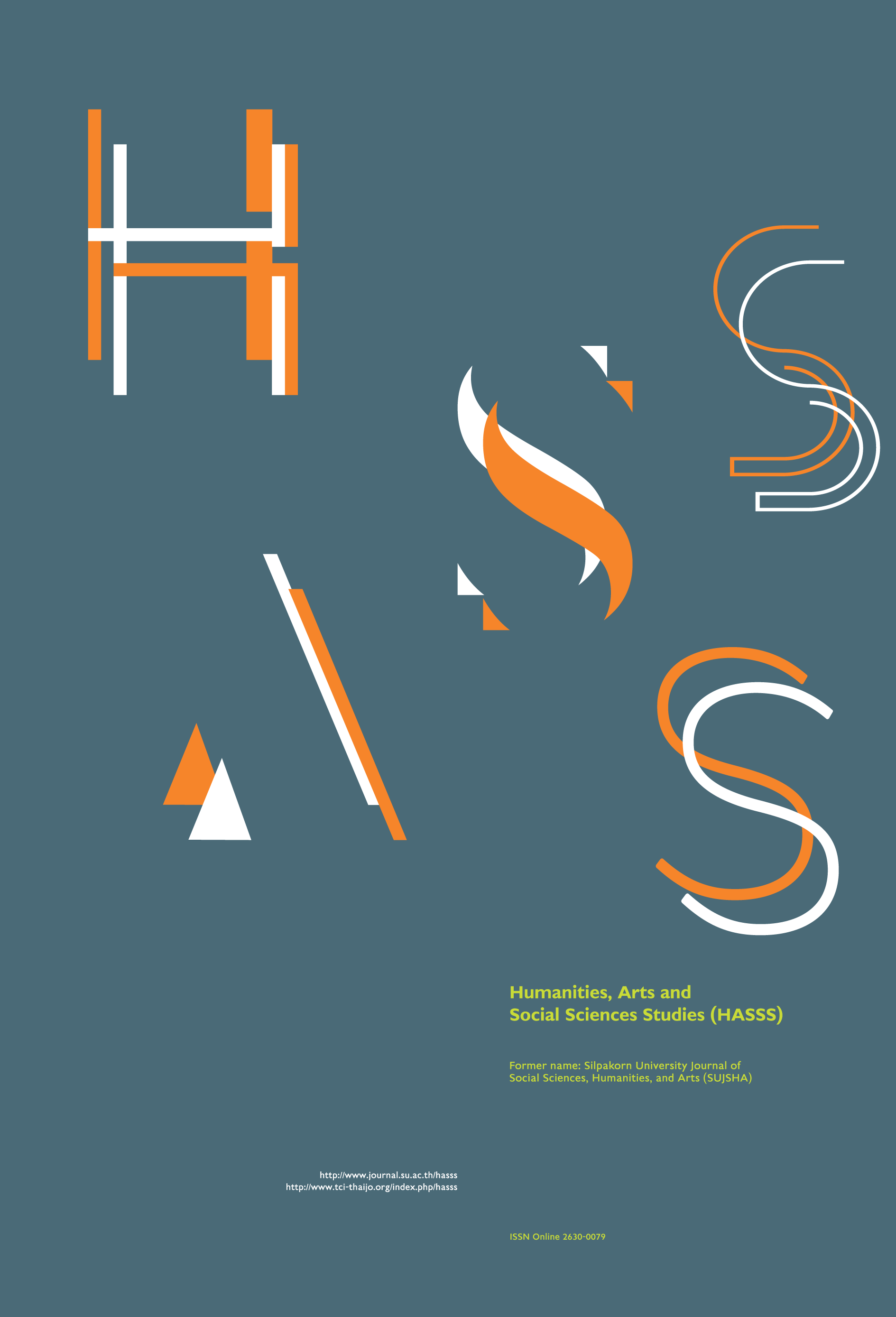Wat Chaiwatthanaram: a new assessment of its configuration and dating
Main Article Content
Abstract
Wat Chaiwatthanaram is a 17th century Buddhist temple bearing a magnificent plan and unique architectural style, located in Ayutthaya, some 77 km due north of Bangkok. Although it is believed to have been completely constructed at the beginning of King Prasat Thong’s reign (AD 1630-1656), examining overlooked written evidence of the Three Seals Law in the Inheritance Section yields a more precise date of Wat Chaiwatthanaram’s construction, which is significantly earlier than that cited in previous studies. Notably, this study evaluates the significance of the base of a wooden-masonry building located north of the ubosot (ordination hall), previously identified as an ordinary ‘Sala’ (pavilion) in the Fine Arts Department’s excavation report, or a ‘Phlapphla Thong pavilion’ (a royal gilded lacquered pavilion). That has never before been explained. Furthermore, by employing the methodology of architectural art history and archaeology, this study evaluates the architectural reconstruction of Wat Chaiwatthanaram. Its reconstruction can be divided into three main groups in various degrees of deterioration, namely, masonry construction, wood-masonry construction and wood construction. Group 1 consists of well-preserved masonry construction. The main prang and the subsidiary prangs at the corners remain in a good condition. Group 2 is the group of wood-masonry construction that has been partially destroyed, such as Meru Thit Meru Rai (The eight Meru structures) and the Gallery. Relative evidence is required in order to create a solid assumption of its architectural reconstruction. For example, the location of a wooden structure can be used to trace the gable roof. Group 3 is the group entailing wooden construction, ‘Phlapphla Thong pavilion’ is mostly destroyed and includes remnants of archaeological evidence, e.g. the boundaries of construction and the remains of wooden pillars, which can be compared to a similar type of building at Wat Yai Suwannaram’s preaching hall. However, the study of Phlapphla Thong pavilion and ubosot remains controversial for the architectural reconstruction, and calls for further research when more evidence is found in the future.
Downloads
Article Details
All rights reserved. Apart from citations for the purposes of research, private study, or criticism and review,no part of this publication may be reproduced, stored or transmitted in any other form without prior written permission by the publisher.
References
Baker, C. and Phongpaichit, P. (2017). A History of Ayutthaya: Siam in the Early Modern World. Cambridge: Cambridge University Press.
Fine Arts Department. (1996). Collection of the Royal Chronicle Volume 3. Bangkok: Fine Arts Department.
Fine Arts Department. (2000). The Poem Eulogizing King Prasat Thong. Bangkok: Fine Arts Department.
Kirdsiri, K., Buranaut, I., Wachirathianchai, B. and Sirikulchayaniont, P. (2018). Prasat Nakhon Luang, Ayutthaya. NAJUA: Architecture, Design and Built Environment 33: A71-A90.
Office of the Royal Society. (2007). The Three Seals Law. Bangkok: Office of the Royal Society.
Pengtago, P. (1994). Architecture. In Wat Chaiwatthanaram, edited by Manawit, J., pp. 10-60. Bangkok: Fine Arts Department.
Pengtago, P. (2019). Architecture. In Wat Chaiwatthanaram, Ayutthaya, edited by Ukhongdee, P., pp. 16-70. Bangkok: Fine Arts Department.
Pongsripian, W. (2015). The Three Seals Law, in Honour of His Majesty. Bangkok: TRF Senior Research Scholar.
Smithies, M. and Na Pombejra, D. (2002) Instruction Given to the Siamese Envoys sent to Portugal, 1684. Journal of the Siam Society 90 (1&2): 125-135.
Weeraprachak, K. (1994). Inscription: the analysis and interpretation of the copper plate inscription in Wat Chaiwattharam. In Wat Chaiwatthanaram, edited by Manawit, J., pp. 147-153. Bangkok: Fine Arts Department.
Weeraprachak, K. (2016). Inscription: the analysis and interpretation of the copper plate inscription in Wat Chaiwattharam. In Wat Chaiwatthanaram, edited by Pengtago, Prateep, pp. 175-183. Bangkok: the 3rd Regional Office of Fine Arts Department, Ayutthaya.
Woraporn P. (2007). Thai Kingship during the Ayutthaya Period: A Note on Its Divine Aspects Concerning Indra. Silpakorn University International Journal 7: 143-171.


